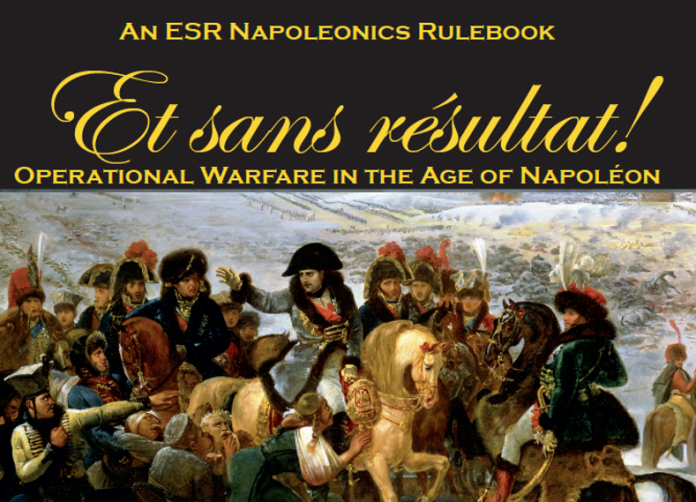With our coverage of the launch of Et Sans Resultat! Series 3 drawing to a close (for now!), we sat down with David, founder of the Wargaming Company to chat about the ruleset, the new models and how he got into Napoleonics. This was a massive undertaking from David, digging into the how, where, when and why of rules and miniature design – thanks to David for his in depth answers!
This interview is part five of our coverage of ESR Series three. You can see the other articles in this series here:
Part One: Core Rules
Part Two: 1812 Campaign Book
Part Three: French Corps review
Part Four: Russian Corps review
Lenoon: Hi David! Let’s start off easy – Who are you and how did you get into game design?
David: Hello, I’m David. I’m a historical wargamer and in 2015 I started a game design firm called The Wargaming Company.
Outside of the “most gamers dabble and tinker with games they play” I really got into game design in 2009 and the catalyst was that I couldn’t find what I wanted on the market – which is saying something because there have literally been hundreds of Napoleonic game systems published. I started The Wargaming Company after I left the tech industry. In a past life there I’d done a variety of work that included writing and editing technical documentation and designing workflows, I was also trained on troubleshooting and repair. Split-half searches, component isolation theory – it is all logical design theory, same as game design – ultimately we’re writing procedures for people to follow in a mixture of known and unknown situations that could arise.
So from a work standpoint, I’m someone who deals in systems, I understand things by taking them apart and seeing how the different pieces influence each other.
ESR – Et sans résultat! – is the outcome of really disciplined focus on specific key aspects of what the gamer is going to do when playing.
Lenoon: What challenges and interests you about designing for the tabletop?
The lack of tools and the strict practical requirements. Designing a tabletop game is, philosophically, like designing a physics engine for a video game. If the engine I design allows the player to do something, then as far as the player is concerned, that’s how that thing works in the universe we’re modeling. This feels especially true for historical gaming because we’re emulating something that we don’t have control over. I imagine it is a little bit easier when designing in a fictional universe because there, there’s the possibility that the designer can change the relationship between different things to make it more convenient for their design by adapting the universe’s lore to match. In historicals we’re emulating a real thing, so the players can, will, and do read about the history and decide for themselves if what we designed makes sense. This makes it a bit more sticky as to what to model and how.
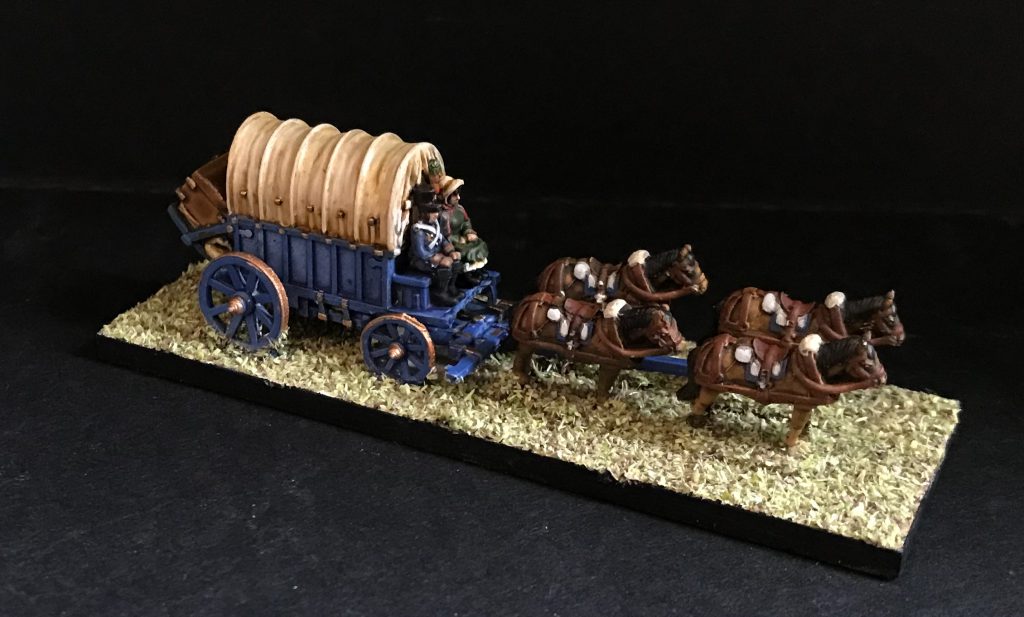
Lenoon: Could you give a general intro to ESR?
David: Sure, ESR is entirely about command & control of division-sized elements on the Napoleonic battlefield. ESR Napoleonics is really for medium to large battles. We do publish small action scenarios and those work well for learning the mechanics. ESR works well for 1v1 engagements with a corps or reinforced corps per side but ESR really shines in multi-player battles with multiple corps-sized forces on each side where players have to coordinate and implement different battlefield tactics in different places such as screening, pinning, and concentration of force.
Unlike most games, players are not some God-like entity that is entirely separate from the tabletop and chooses how to move each piece as they feel at the moment. Instead, each player’s command is required to comply with one of six orders that can be issued to it (Attack, Defend, Move, Support, Reserve, Withdraw) and the player’s whole command, when moving, is required to converge on its current objective – effectively the order the player is functioning under. ESR’s order system prevents immediate reaction to a changing battlefield except in limited cases that the player has to plan ahead and build-in flexibility or else they will likely be caught flat footed so planning ahead multiple turns is incredibly important.
The typical ESR Napoleonics game is very maneuver based. Very maneuver based. The typical introduction game we run at a convention consists of 70% maneuver, 15% combat resolution, and the remaining 15% is a mix of preparation before the combat and recovery afterwards. Larger games with 4-6 players per side can shift towards a more even split because armies have enough troops to afford it.
Lenoon: It certainly offers something unique in the movement focus, but why dive into a crowded world of Napoleonics rules with ESR?
What I wanted didn’t exist.
There are a lot of tactical games in historical gaming. Nearly all of them are tactical games. Some call themselves “grand tactical”. But only a couple of those are actually higher scope than tactical. Some call their units ‘brigades’ instead of ‘battalions’ but if you do a find & replace swapping those two words, you’ll find that they play basically the same. Tactical games are fun. I enjoy a good tactical game. I have a couple favorites. But I wanted something different. Napoléon didn’t command the battles of Austerlitz or Jena or Wagram or Borodino by making tactical decisions for each battalion. Neither did any of his opponents. They were commanding armies and they gave orders to their subordinates – mostly their immediate subordinates, corps commanders. Those corps commanders mostly instructed their direct subordinates – division and sometimes brigade commanders. That was the game I wanted to play. I wanted to be one of a dozen senior commanders at a major Napoleonic battle, making decisions about when to commit my reserve division, how aggressively to push, not micromanaging the facing of each battalion.
So, we designed a game to play that.

Lenoon: You’ve released ESR 3 as a brand new edition – what prompted a new edition, and what’re you excited about with the new edition?
David: ESR Series 3 is really a huge move towards the original vision for a large scope, high scale, operational Napoleonic miniatures wargame. A big part of the design is making sure that the mechanics keep the players in the right perspective and mindset. We were trying to address this same thing when we designed ESR Second Edition but we just got stuck. That was the impetus to introduce the new Series 3 edition – to fix those things that we hadn’t been able to address before. What’s really exciting is that ESR Series 3 really brings the game closer to the original vision of it, keeping players focused on high level command coordination.
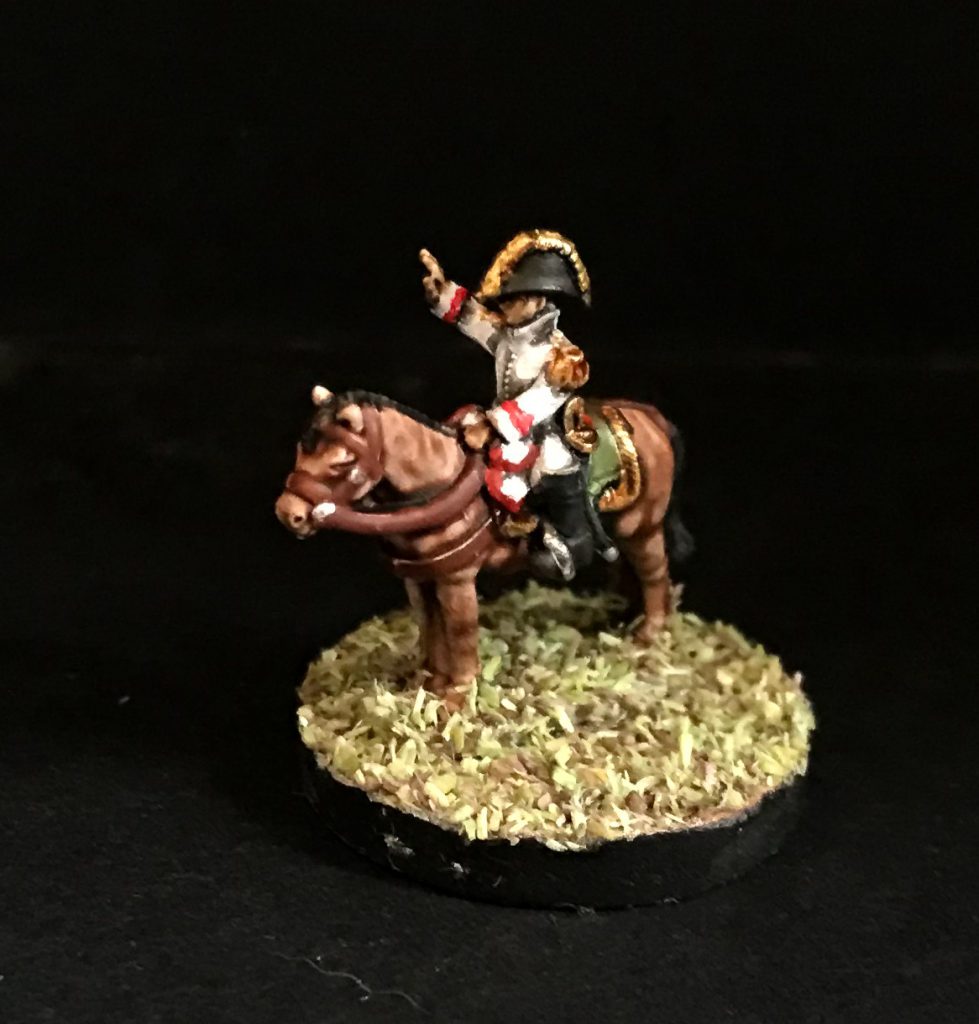
Lenoon: What’s unique about your game?
David: Quite a bit. ESR is highly focused on command & control while there is very little opportunity for a player to “manage” combat, combat is almost automatic – when you put two divisions of opposing troops in close proximity of each other, they are going to combat each other. There is no “decide if you want to shoot” because army and corps commanders were not deciding if their frontline infantry fired a musket volley at the enemy. ESR refocuses players by putting them in the role of an army or corps commander and that means you have very limited tools with very broad implications. Everything below the player’s scope is abstracted and automated by the game mechanics. You can’t tell 5-10,000 soldiers to execute a nuanced series of “if this, then that” commands. Instead, using a very narrow toolkit, you’re ordering divisions to move, to attack, to defend, to support each other, to wait in reserve, or to withdraw from the enemy. You can accomplish some fairly complex plans, but you have to use simple tools to do so.
Lenoon: What’re the advantages of playing at the division/army scale of ESR?
David: The battles you can play, the generals’ roles you can take, and the unique experience compared to tactically focused systems. You’re not going to realistically play Wagram managing every battalion that was there at the tactical level – maybe you could, people have, but they always cut corners somewhere, reducing the number of battalions, only playing part of the battle, playing the game over many days. Playing at the operational scale means you don’t have to make those compromises. You focus on the decisions that Napoléon, Charles, Davout, and Rosenberg did, not the decisions the colonels and brigadiers did.
Lenoon: You’ve been designing ESR for a while now (8 years I think?) – have you seen any changes in tabletop gaming in that time?
Yeah, The Wargaming Company is about 8 years old, I started working to design ESR earlier than that but basically yeah, call it a decade. The first thing I’m going to say is that tabletop miniatures gaming has never been better or bigger. There’s never been so much available of this quality or variety.
There are two significant changes I see on the historical side of tabletop miniatures gaming:
1) There’s a generational sea change impacting historical gaming. As that change occurs in the marketplace there are significantly different expectations. From packaging and pack configuration to manufacturing materials, it is all changing. This is both on the player-expectation side and on the supply side as new companies offer packs configured correctly and specifically for their game systems – finally matching what has been the case on the sci-fi and fantasy side of the hobby for decades. We made a vary conscious decision that we want to offer a one-stop-shop so that new gamers entering the hobby could easily find what they need to get started.
2) A business-to-business OEM model is starting to take shape in the US along side what appears to be a potential resurgence in US manufacturing for the wargaming hobby. This is really a big deal for allowing smaller design firms to make a dent in the market. A large shop can afford to send staff to China to supervise production and quality or sort out a failure but a small one probably can’t. What a small shop can afford to do is put someone on a domestic flight to a US or Canadian manufacturing partner and so that really opens the field up for new startups.
Both of these point to a maturing of the market where the more developed industry infrastructure can provide more and better stuff. We’ve benefitted from a lot of diversity of subject and offerings in historicals in the past but now I think we may start seeing the more completeness that has often eluded our genre.
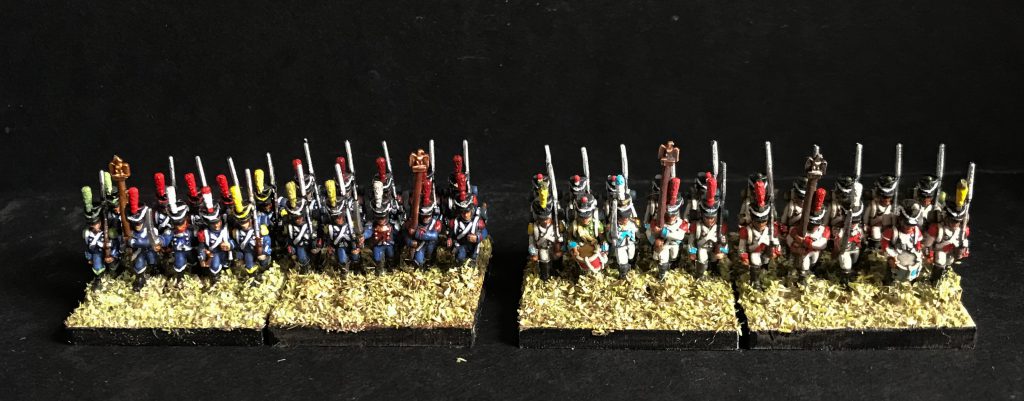
Lenoon: I’d like to think that the team here at Goonhammer are part of that change! Talking of completeness, you’re releasing a new line of minis, could you talk us through the thinking behind the line, and what you’re looking forward to?
Oh geez. At this point I am looking forward to finally releasing them. We started development 9 May 2019 – four years nearly to the day that we finally started taking pre-orders. We spent approximately two years developing the initial sculpts. At that point we started moving to production but there were a lot of stumbles right then. Over the past ~24 months we spent a lot of time working with different potential manufacturing partners, learning a lot about different manufacturing methods. Now that we’re finally releasing them after all this effort, it is a pretty amazing feeling. In a lot of ways, this has been what I’ve been looking forward to for all this time and now… just getting to enjoy the miniatures and getting them out into the world so everyone else can too.
Lenoon Edit: this interview took place in the summer – the miniatures and rules are now available – you can pick up ESR rules and minis from The Wargaming Company if you’re in the US and North Star Miniatures in the UK.
Lenoon: How do you go from designing rules to going into minis – what made that possible?
David: Time, money, determination. Game design was pretty easy to start doing from a practical business standpoint. You need time and interest but you don’t need much capital until you reach the printing stage and even there we’ve got lots of options in the modern market. There are small run print shops that will produce you a couple dozen books at a time, you can do print-on-demand, you can sell digital copies. So the barriers to entry to initially designing rules are really not money driven. This is good and bad, barriers act as a filter, they are bad when they filter out positive things, they are good when they filter out negative things. In historical gaming there’s a lot of ’noise’. Lots of hobby projects turn into hobby businesses and don’t necessarily mature farther than that. We started that same way, Et sans résultat! was a hobby project, then it became a test product, then it became the nexus of a system. A game system isn’t a rulebook, so to achieve that you have to get past just the rule writing part of design. You have to move out into what accessories are necessary to play and how to provide those to customers either through partnerships or doing it yourself. That’s the difference between a feature and a product really. A product is a complete system, it is a thing that can be used. A feature can be really cool, but is by definition not complete. So I suppose the simplest answer is to say we went from designing rules to producing miniatures because we were determined to go from designing a feature to providing a complete product, a game system.
Lenoon: I get that you wanted a complete system, but why release your own line?
David: Similar to why we developed our own game system: The miniatures we wanted didn’t exist. There are maybe a half-dozen or more 10mm lines on the market, but none are complete, quality varies, and prices are rising. We tried working with an existing manufacturer first. We originally targeted doing a 15mm partnership, but we just couldn’t seem to make it work business-wise, i.e. the costs didn’t line up with what we wanted to produce. Next we turned to a 10mm manufacturer, that was OK, but it was clear pretty early on that it wasn’t going to work for us longterm. Their line was fairly extensive but still a lot more limited than what we needed, and coordination and cost were struggles. Ultimately, we wanted to control our own destiny, which means owning our own IP.
Like I mentioned, it was early 2019 we started work developing our own miniatures line. We spent about two years going from concept to minimum viable product but then ran into seemingly endless issues getting the line into production and we’re finally emerging from that quagmire. So I won’t say controlling your own destiny is particularly easy ;-). But we are very glad we did it. Now we’re in a place where we can provide the whole widget. From a business standpoint that obviously makes immediate sense, but it is also something the market expects and desires. As the hobby turns over to a new generation of gamers, there’s a lot less tolerance for having to piece together a game from several different suppliers because none of them make all the parts you need to play. So while we’re excited that people can buy everything they need from one place and that one place is us, there’s also a serious, significant benefit to new historical gamers to be able to find everything they need in one place. Those of us who have been steeped in a hobby for a long time and know the landscape often underestimate just how opaque that landscape is when you’re new. For a lot of gamers we’re the first or one of the first historical gaming companies they discover and this makes the one-stop-shop/low barriers to entry a fundamental we feel compelled to offer in order to help grow the hobby.
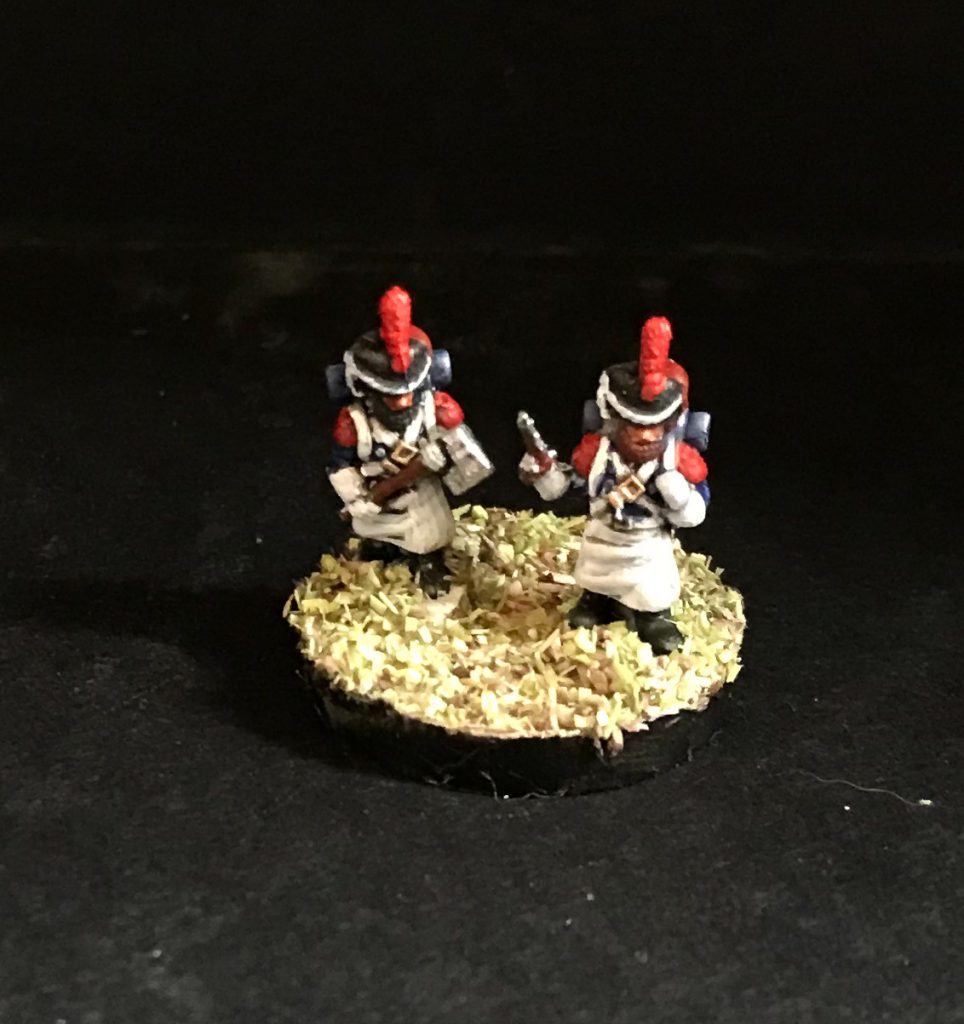
Lenoon: Napoleonics minis are a crowded marketplace – Why pick up yours?
David: Detail, material, integration, and completeness. ESR Miniatures are the most detailed and accurately scaled 10mm figures on the market, they are at least as detailed as the best of the 15/18mm lines available. And, they are, I believe, the first 10mm Napoleonic line mass produced in plastic.
They also may be the first historical miniatures line specifically integrated with a series of uniform guides, that is that our ESR Campaign Guides each include literally thousands of uniform images drawn specifically for our publications, and ESR Miniatures are sculpted to match those uniform depictions so that gamers don’t have to guess how to paint something that is sculpted but not depicted in their painting guide.
And lastly, we are working to produce the most complete line of Napoleonic miniatures available in any scale. I don’t say ‘complete’ lightly, and I don’t mean it in the sense of “we’ll do all the major players”, I mean that our Campaign Guide for 1812 includes almost 3,000 uniform images for hundreds of historical units and we are making miniatures to represent all of them.
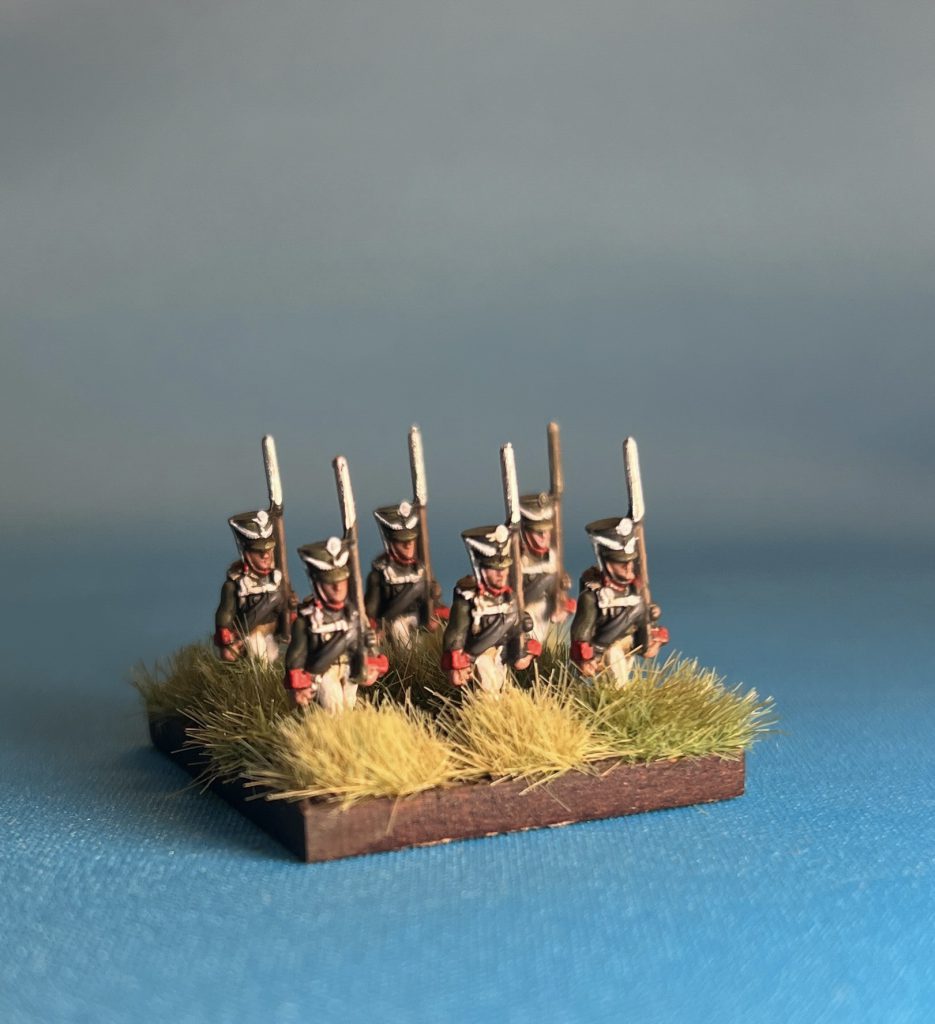
Lenoon: Where do you plan to go with the models them in the future?
David: With the miniatures where do we plan to go? Well… immediately we plan to release more. We’ve got a catalog of 15 factions sculpted and awaiting production (Lenoon note: Most manufacturers end up with six to eight!). So it is simply a matter of spinning up additional packs and broadening the available range. As I write this we have two volumes of our ESR Campaign Guide series in-print and available. There are quite a few also waiting updating and republishing from their previous editions as well as a lot of new ones to introduce. Maybe obviously our course is to move to a place where we are releasing the miniatures for a Campaign Guide along side that Campaign Guide. We’re in a pretty good place to do that now with the strong back catalog we’ve built up. Don’t worry though, there are a lot of miniatures yet to release to backfill our current Campaign Guides and we have additional Campaign Guides in development, so you shouldn’t have to wait long for more miniatures to be available.
Additionally, we’ve gotten a lot of questions that come down to: “Will ESR Miniatures be available in some other ‘generic’ pack if I want to use them for other games?” Yes. We also intend to offer them in some form of generic or bulk pack for gamers who love ESR Miniatures but have a different favorite ruleset they like to use.
Lenoon: I’m sure they will – we really enjoyed the mini packs!
Massive thanks to David for answering our questions – if you’d like to follow anything here up, I’d recommend joining the ESR Facebook group where rules questions get a quick, clear and authoritative answer! If our coverage of ESR has whetted your appetite for showing off your skills as a strategic mastermind, you can pick up ESR rules and minis from The Wargaming Company if you’re in the US and North Star Miniatures in the UK.
Questions, comments, suggestions? contact@goonhammer.com or leave a comment below.
